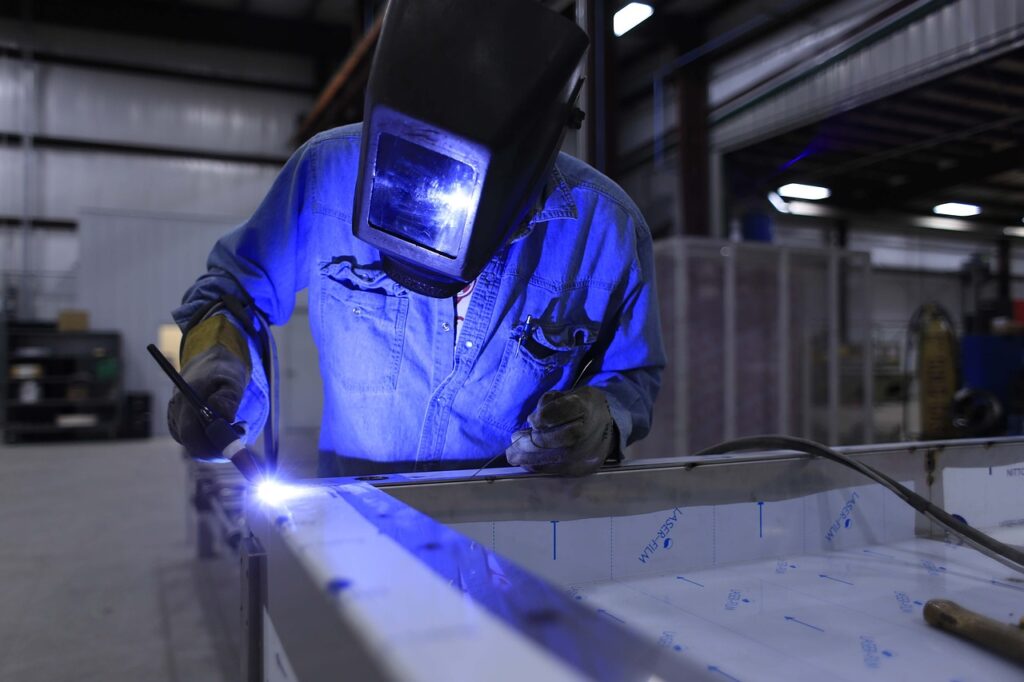In the face of global challenges, the Indian manufacturing industry has demonstrated remarkable resilience, emerging as a beacon of hope. This resilience can be attributed to a combination of factors, including strong domestic demand, government initiatives, a skilled workforce, and favorable economic reforms. India’s manufacturing sector has solidified its position as a key driver of economic growth and stability.
Robust Performance in Manufacturing PMI
The Manufacturing Purchasing Managers’ Index (PMI), a widely recognized indicator that surveys purchasing managers in 500 manufacturing companies across 19 industries in India, underscores the sector’s robust performance. Notably, India stands out as the only major economy with significant factory output growth. In June, the PMI registered at 57.8, slightly lower than May’s 58.7. A PMI value above 50 signifies expansion, while a value below 50 indicates contraction.
Factors Driving the Revival
The revival of India’s manufacturing sector can be attributed to several key factors. Firstly, there is strong demand from both domestic and international markets, stimulating enhancements in production, sourcing, and hiring. The government’s increased spending, particularly in capital expenditure, has played a pivotal role in this resurgence. Additionally, the rising demand for private consumption, which experienced a growth rate of 7.5% in FY23, has further contributed to the positive trend.
Impact on the Economy
The resilience and growth exhibited by the manufacturing sector have significant implications for India’s overall economic performance. The sector’s vitality is instrumental in achieving high GDP growth rates. However, it is worth noting that this growth may also come with challenges such as higher inflation and wage costs. Nonetheless, the strong demand enables companies to pass on increased costs to consumers, maintaining a favorable business environment and supporting sustained economic growth.
A Global Perspective
While Indian manufacturing thrives, many major economies face significant hurdles in their manufacturing sectors. China, for instance, experienced a manufacturing PMI of 50.5 in June, lower than May’s 50.9, reflecting declining export demand and falling employment, leading to a notable decline in business confidence. Similarly, both the Eurozone and the United States encountered contractions in their manufacturing sectors, with PMI figures of 43.4 and 46.3 in June, respectively. The UK’s manufacturing sector contraction has also worsened in recent times.
A Prime Destination for Foreign Investments
India has emerged as a highly attractive hub for foreign investments in the manufacturing sector. Renowned brands in mobile phones, luxury goods, automobiles, and more have either established or are actively exploring manufacturing bases in the country. With the potential to reach a staggering US$1 trillion by 2025, India’s manufacturing sector holds immense promise. The implementation of the Goods and Services Tax (GST) further enhances its appeal, creating a common market with a GDP of US$2.5 trillion and a population of 1.32 billion, making it an enticing prospect for investors. The Indian Cellular and Electronics Association (ICEA) projects a cumulative laptop and tablet manufacturing capacity of US$100 billion by 2025, facilitated by policy interventions.
SAMARTH Udyog Bharat 4.0 and Enhanced Competitiveness:
The Government of India’s Ministry for Heavy Industries & Public Enterprises has initiated SAMARTH Udyog Bharat 4.0, also known as SAMARTH Advanced Manufacturing and Rapid Transformation Hubs. This program is designed to enhance the competitiveness of the manufacturing sector, particularly in the capital goods market. By focusing on the development of industrial corridors and smart cities, the government aims to foster holistic national growth. These corridors will not only integrate and monitor industrial development but also create a conducive environment for advancement in manufacturing practices.
Industrial Corridors and Smart Cities:
The establishment of industrial corridors and smart cities serves as a vital component of India’s vision for manufacturing excellence. These corridors act as catalysts for economic growth and provide a conducive environment for industries to flourish. By integrating infrastructure, logistics, and support services, these corridors streamline the manufacturing process, enhance connectivity, and attract investments. Moreover, the development of smart cities ensures sustainable and efficient urban centers that offer a range of amenities and resources to support manufacturing activities.
Policy Interventions and Growth Potential:
India’s manufacturing sector has received significant impetus through policy interventions, creating a favorable environment for both domestic and foreign investments. The government’s proactive approach includes initiatives such as “Make in India” and “Atmanirbhar Bharat” (Self-Reliant India), which aim to promote indigenous manufacturing, innovation, and technological advancements. These policies, coupled with the vast consumer market and a skilled workforce, contribute to the sector’s growth potential and attract global manufacturers.
Source: A part of of this post is based on the article “What explains the resilience of Indian manufacturing?” published in Live Mint on 5th July 2023.
If you have any questions about this post or about manufacturing in India, please get in touch with us at monika@nyasa.solutions.

